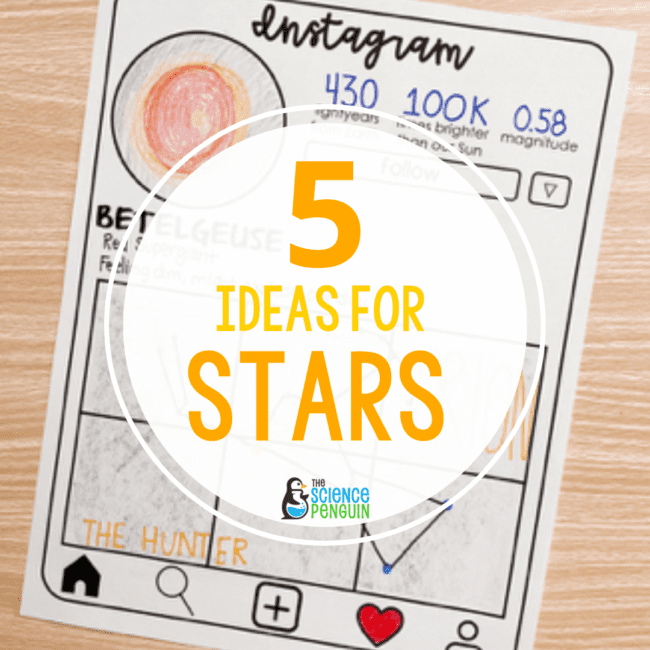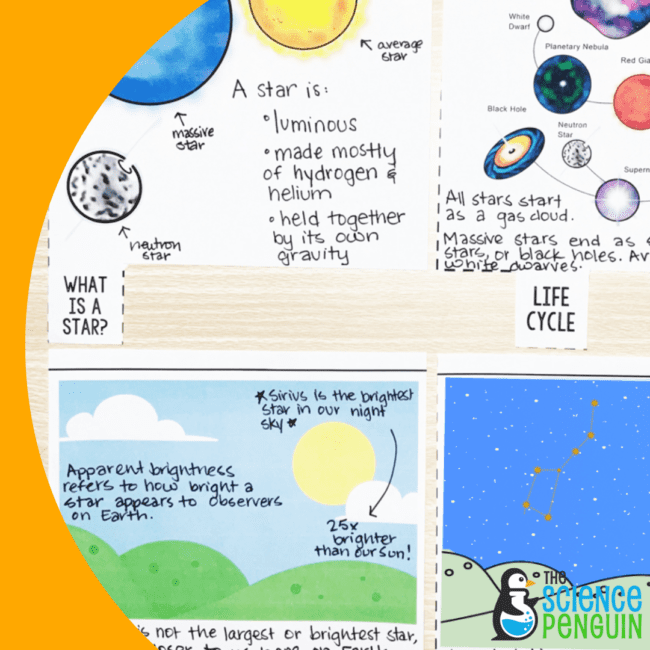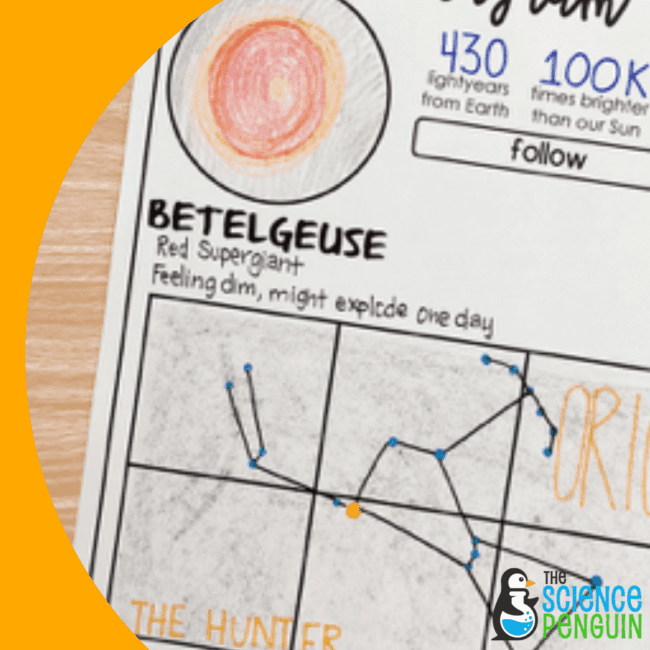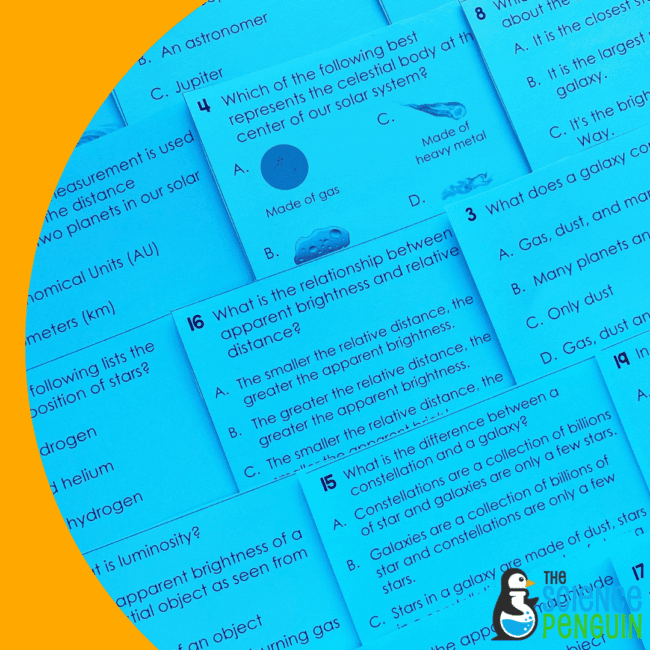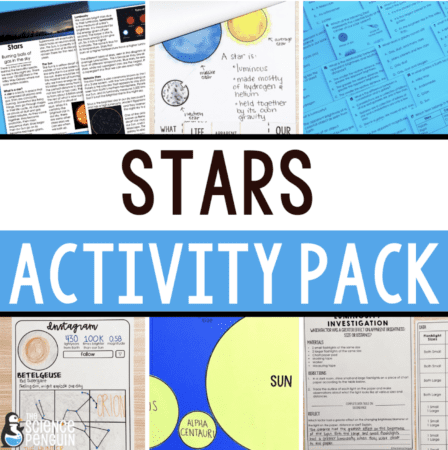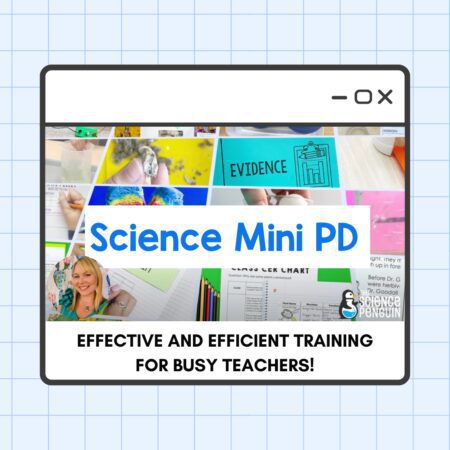Are you ready to take your students on a cosmic journey through the wonders of the solar system and the stars that adorn our night sky? I’ve got just the thing for you—a fantastic Stars in the Solar System Activity Pack that will make learning about stars and their differences a truly engaging experience for your students!
If your experience is anything like mine, your students will struggle to understand why the Sun is the brightest star in our night sky, but it is not the largest nor the brightest star in the Universe. How could that be?
No worries – I’ve got ya covered! Here are five easy ways to help teach the apparent brightness of stars in our Universe.
1. We Make a Stars Flipbook
Who doesn’t love a good flipbook?!
We create a Stars Flipbook together after we’ve settled into our unit.
The flipbook has five tabs. We talk about what a star is, life cycles of a star, apparent brightness, constellations, and of course our Sun! My students love being able to create their own book with drawings and notes that they can share with their caregivers. It’s a handy tool for studying and preparing students for assessments.
See it on TPT: Stars Flipbook
2. We Use Human Models
It’s no secret that my kids love to be up and moving in my classroom, which I love. So, getting the kids involved in this part of the lesson is a win-win for everyone! For this activity, I use three student volunteers. I have one student act as Earth, I have another student act as the Sun, and finally a third student act as Betelgeuse.
My “Sun” is given a flashlight that is covered with paper to diffuse the light a bit. The Sun is positioned fairly close to the Sun. Betelgeuse is given a slightly larger flashlight, without paper over it, and is placed farther away from the Earth. Students can make natural observations once all three of my celestial bodies are in position.
They can see that Betelgeuse is brighter, but it’s farther away from Earth. (I usually have to tell my students to ignore the paper on the flashlight). This leads into a natural discussion about how a star that is farther away from Earth is actually brighter (and larger!) than the Sun, but to us Earthlings it appears to be larger and brighter than other stars in our Universe.
3. We Make an Instagram Account for a Constellation
Let’s face it- our kids know social media, so let’s use it to our advantage when we can! My students love creating a new Instagram account for a constellation in our Universe. You know we’ve gotta make it Science-y though!
Did you know constellations don’t care about likes or follower counts? They don’t! Instead, students are focused on more important numbers, like their chosen constellation’s distance from Earth in light years and its magnitude. They use the first nine blocks of the Instagram page to draw out their constellation, labeling important stars and giving their constellation a nickname. They also create a bio for their constellation!
4. We Read About Stars
Understanding science in a hands-on way is critical, but we have to back it up with authentic nonfiction texts. My kids are very unique in terms of how much they like to read, so finding texts that envelop them in the content and interest them are critical. We read about the Sun, luminosity of stars, and some of the most notable stars in our Universe. While doing this reading, we’re also practicing text structures, comprehension, and of course content-area vocabulary.
Find it on TPT: Stars Comprehension Passage
5. We Revolve Around the Room with Vocabulary
Speaking of content-area vocabulary, we know our kids need to interact with the words multiple times – and as I said before, you know my kids love to get up and move! I use vocabulary task cards around the perimeter of the classroom, and my students have to “revolve” around and answer each question on the cards. I print them on colored cardstock for a little pop of fun!
Find This on TPT: Stars Vocabulary Task Cards
And there’s great news!!! We’ve got this all planned for you in our Stars and Apparent Brightness Activity Pack on TPT. The activities mentioned above are all included, and there are several other ideas you can use. Happy Stargazing!
Sign up for the Free Resource Library
This is an exclusive library of 40+ science printables, labs, activities, and games for grades 3-6. Sign up with your personal email and check your email for immediate access.

